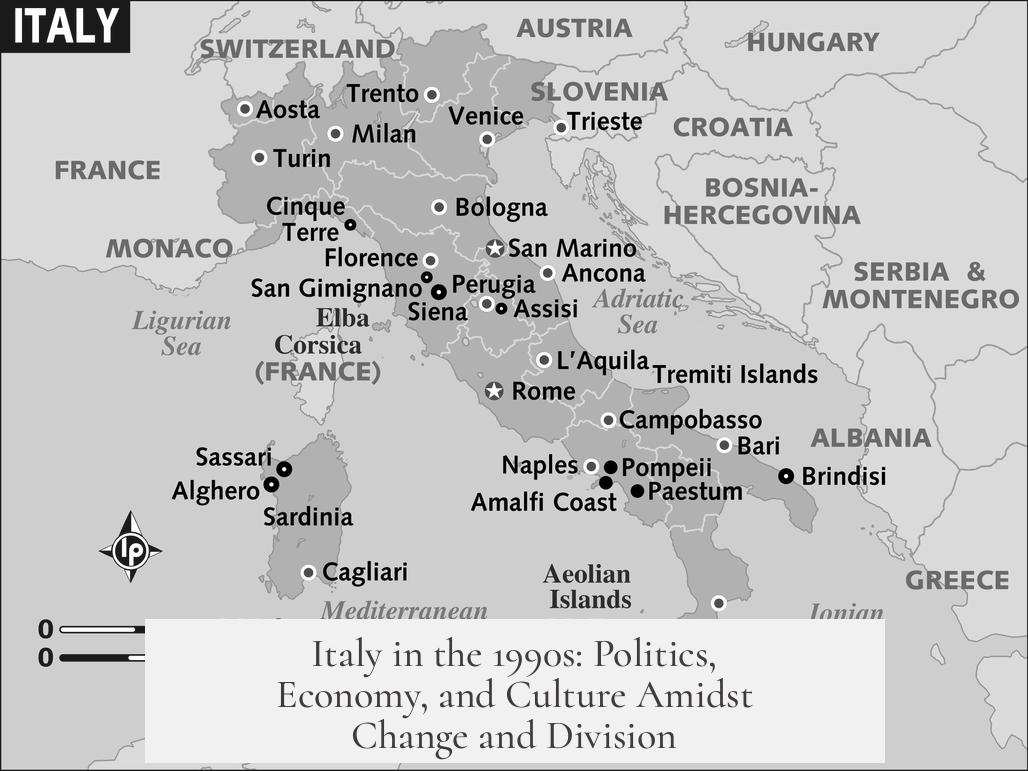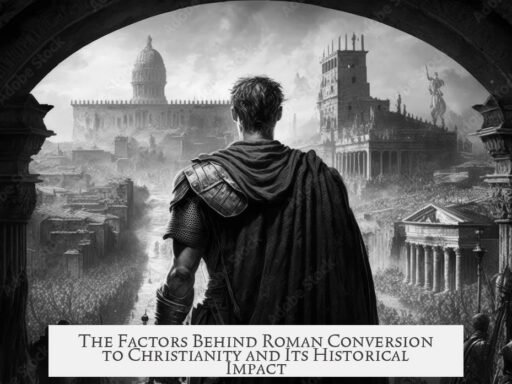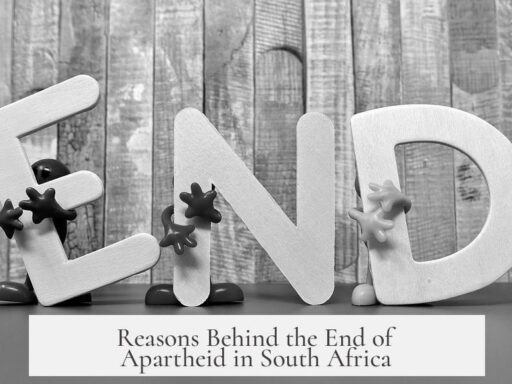Italy in the 1990s experienced a turbulent yet transformative era marked by political upheaval, economic shifts, and cultural vibrancy. The decade began with the collapse of the traditional political system, driven by the “Clean Hands” corruption trials. These events exposed widespread corruption and challenged established parties, profoundly shaking national confidence. The assassinations of anti-mafia magistrates Giovanni Falcone and Paolo Borsellino further intensified public focus on organized crime and corruption. Amid the chaos, Silvio Berlusconi rose to power. His media empire projected an image of prosperity and consumerism, which resonated with many Italians. His subsequent political career promised a modernized, thriving society.
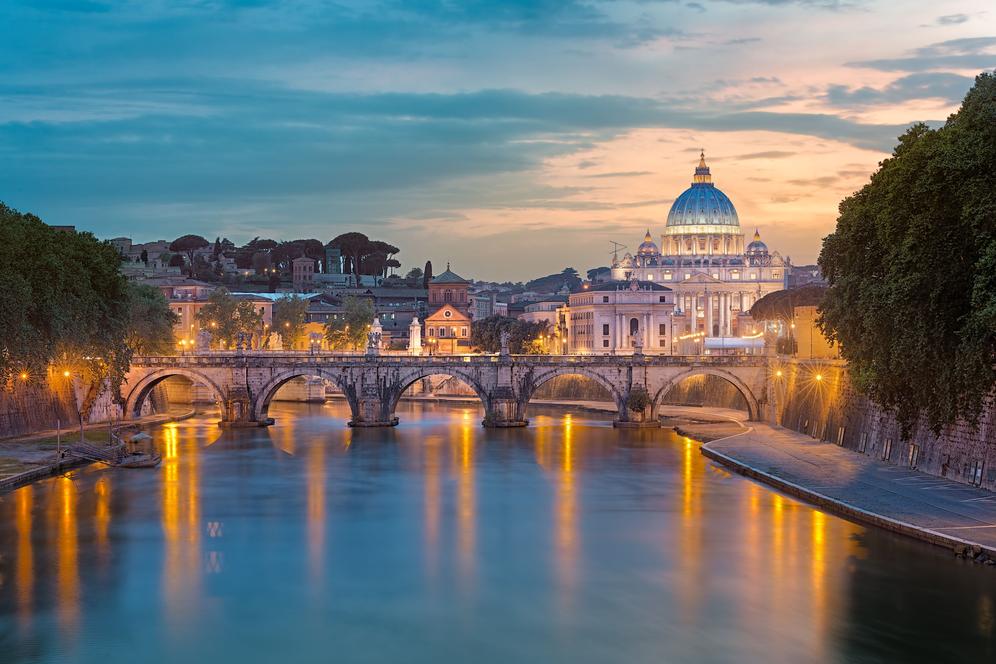
The Italian economy saw significant changes. European integration accelerated, leading to the adoption of the Euro and creating opportunities for new investment. Privatization opened sectors to private capital, expanding a managerial middle class, particularly in the industrial north. Conversely, the southern regions struggled economically. Reliant on state-owned enterprises, the South lagged behind, deepening the north-south divide. Labor unions resisted widespread plant closures, particularly in the South, where alternatives were scarce. Notably, the southern soccer club Napoli entered a period of decline due to mounting debts, culminating in relegation in 1998 and bankruptcy in 2004. This financial and social disparity fueled a “brain drain” as educated southerners migrated northward for better career prospects.
Socially and culturally, the 1990s mixed tensions with vitality. Despite the political turmoil and crime concerns, there was a palpable sense of national energy and optimism. Italy maintained high international relevance through cultural exports like the Oscar-winning film “Life is Beautiful.” The country reflected a global image of creative vitality. Infrastructure projects improved connectivity, exemplified by the completion of the high-speed rail line between Florence and Rome in 1992, part of an ongoing effort to link Italy’s major cities.
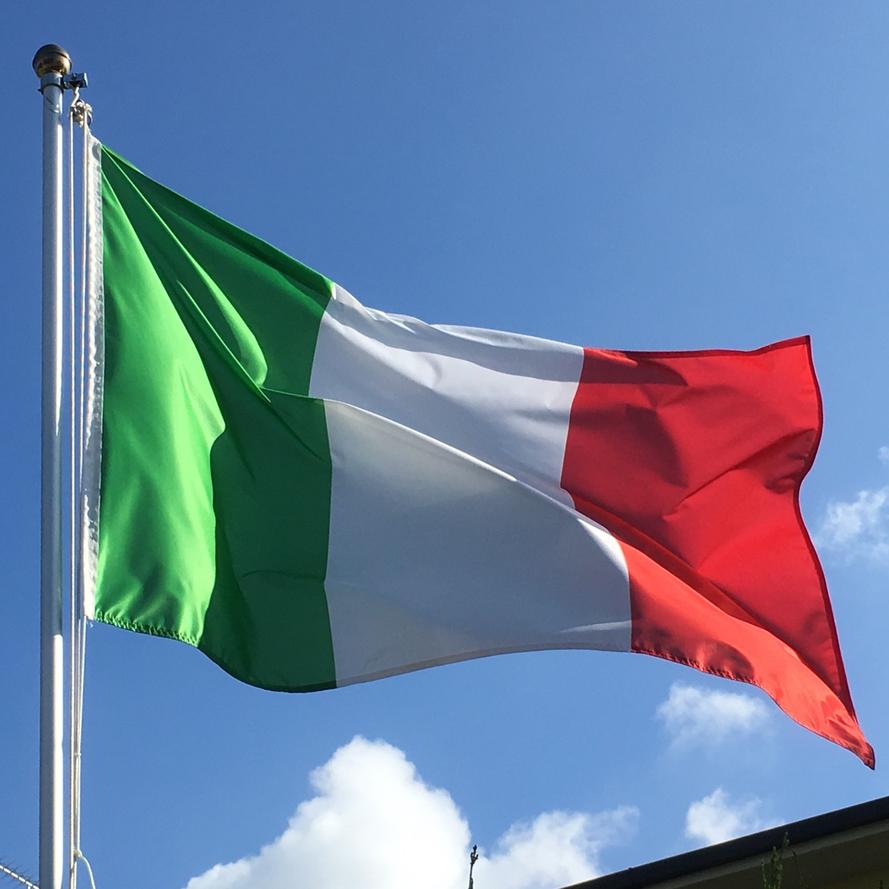
Sport provided moments of unity and celebration. Italy hosted the 1990 FIFA World Cup, transforming the country into a festive, international hub. Football culture remained central to social life, underscored by the struggles of southern teams like Napoli against wealthier northern clubs backed by stronger financial assets and sponsorships.
Migration patterns shifted in line with economic realities. Internal migration from the South to the North remained prevalent, while European integration opened further job opportunities abroad. This migration helped reshape Italy’s social fabric, as Italians sought better lives within and beyond national borders.
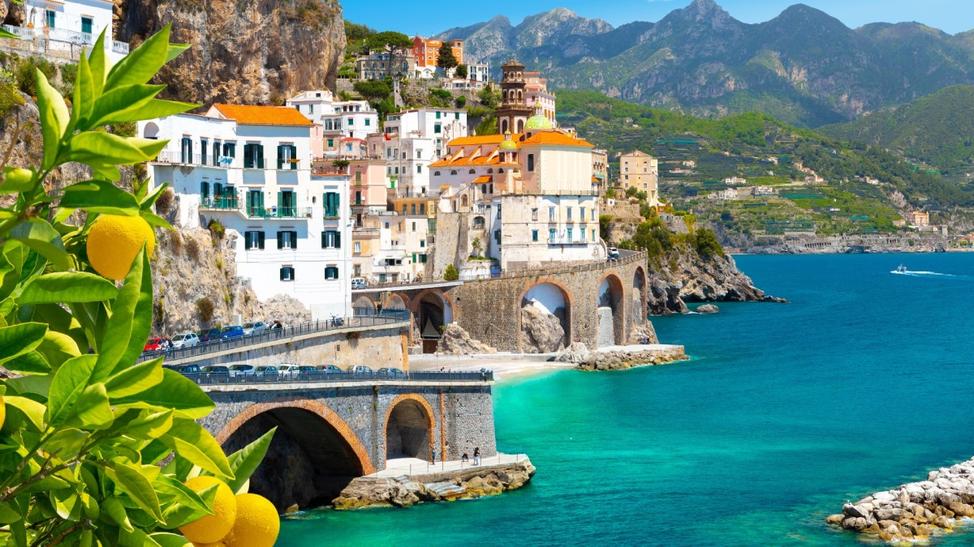
| Aspect | 1990s Italy Details |
|---|---|
| Political | Collapse of traditional parties, Clean Hands trials, Berlusconi’s rise, anti-mafia focus |
| Economic | Privatization, Euro adoption, north-south divide, labor unrest, brain drain |
| Cultural | International film acclaim, 1990 World Cup, TV influence of Berlusconi’s consumer message |
| Infrastructure | High-speed rail Florence-Rome completed, expansion plans for larger cities |
For those studying this period, key resources include Mark Gilbert’s The Italian Revolution: The End of Politics, Italian Style? and John Ginsberg’s biographies and histories of contemporary Italy. Soccer documentaries and the Rai Teche archival footage provide cultural insights and snapshots of everyday life through the decade.
- Italy’s 1990s political landscape was marked by upheaval and new leadership.
- The economy grew but deepened regional disparities, especially between North and South.
- Cultural achievements boosted Italy’s global profile despite internal struggles.
- Infrastructure improvements eased connectivity between major cities.
- Migration patterns reflected economic shifts, with talent moving northward and abroad.
What was Italy like during the 1990’s?
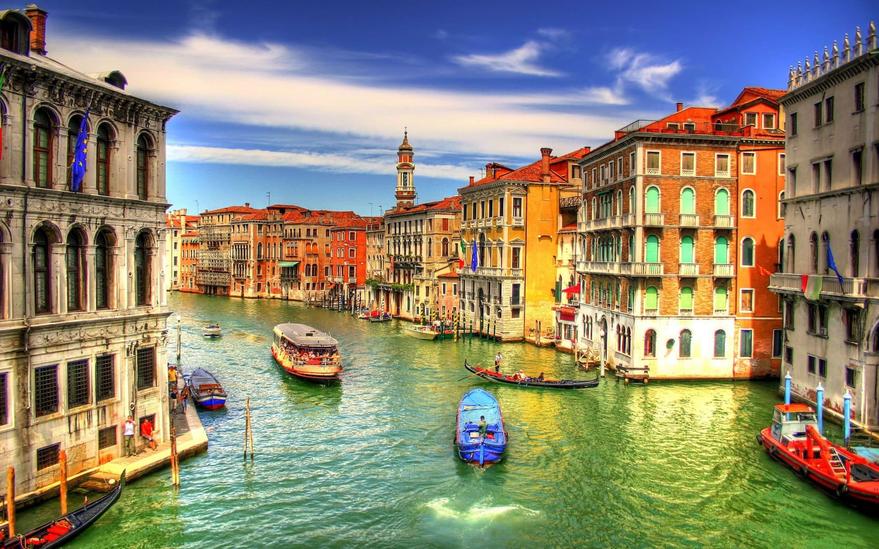
Italy in the 1990s was a nation caught between seismic shifts and vibrant hopes, navigating a maze of political collapses, economic transformations, social tensions, and cultural celebrations. Let’s dive into this fascinating era to see how Italy juggled upheaval and optimism.
Dismantling the Old Guard: Political Earthquake
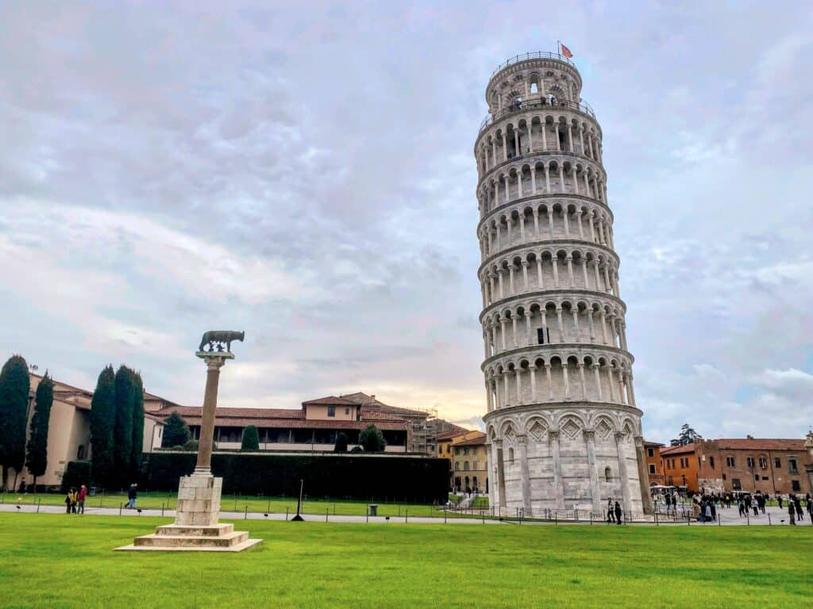
The 1990s open with a dramatic headline: the collapse of Italy’s political system. The country’s old order, which had long relied on a dense web of party loyalties and cozy networks, suddenly unraveled. The infamous Clean Hands trials exposed a culture of corruption deeply embedded in politics. Think of it as Italy’s political earthquake shaking foundations once thought unbreakable.
Even darker moments darkened the decade. The murders of anti-mafia magistrates Giovanni Falcone and Paolo Borsellino shocked the nation. Their deaths made Italians confront organized crime’s embrace like never before. Mafia-related corruption wasn’t just a whisper in the shadows; it was headline news, a sensitive yet urgent public issue.
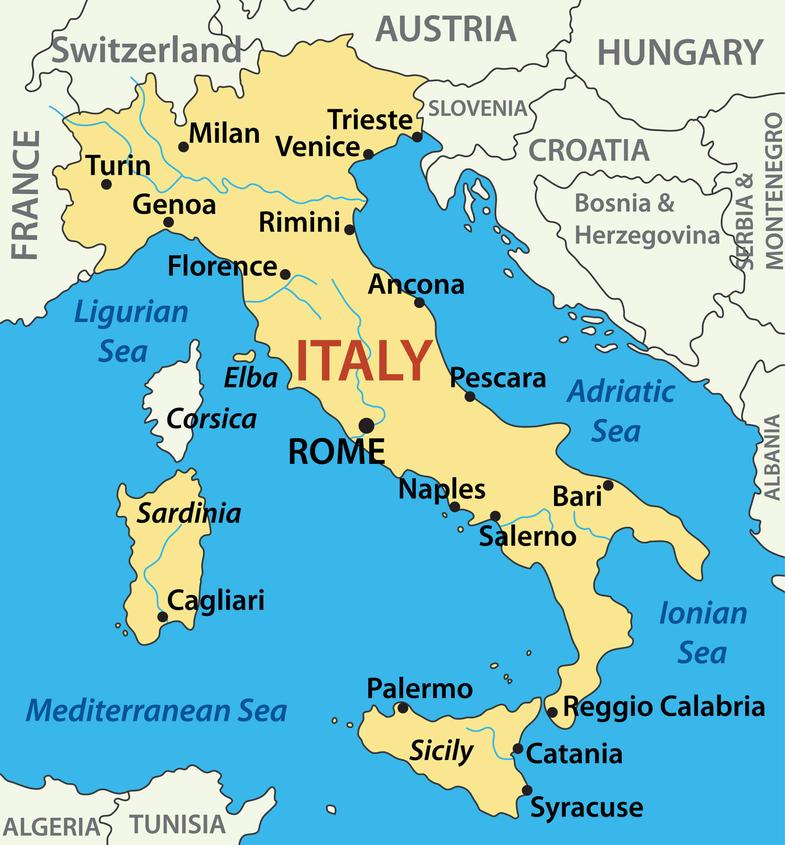
Yet, amidst the chaos, Italy’s political landscape began to shift. The rise of Silvio Berlusconi brought new flavor to the mix. Berlusconi’s television powerhouse sold a vision of consumerist prosperity—a bold contrast to the backdrop of political and economic turmoil. When he jumped fully into politics, his promises resonated widely, promising a society of abundance that felt within reach.
Late in the decade, Italy took decisive steps toward European integration, culminating in adopting the Euro. This decision foreshadowed deep economic and cultural shifts that would ripple through Italy’s future.
The Economy: North’s Boom, South’s Wait
Italy in the 90s witnessed a growing economic divide. Picture this: northern cities buzzing with fresh investments and managerial growth, while much of the south stalled, locked in dependence on faltering state-owned companies. European integration ushered in a new financial economy, opening investment floodgates, especially benefiting northern Italy’s fast-growing cities.
Privatization furthered this divide. Shutting down old industrial plants, particularly in the south, stirred up fierce labor unrest. Workers and unions fought hard against closures that left few alternatives, fueling social tension and uncertainty.
Sports fans noticed the economic realities too—watching Napoli’s slow, painful decline was like witnessing southern economic woes play out on the soccer field. Once a proud club riding high, Napoli’s debts mounted, and relegation followed in 1998. The club would eventually go bankrupt in 2004, highlighting the north-south economic imbalance.
Another symptom of regional disparity was the “brain drain” phenomenon. Educated southerners packed their bags for northern cities, chasing the opportunities born of new economic conditions. Many Italians also looked beyond borders, leveraging increased European integration to find work abroad. It was a decade of migration, not just people, but hope flowing northward or outward.
Social and Cultural Vibes: Party and Progress
Despite political shakeups and economic divides, the 1990s Italian national mood was surprisingly upbeat. Exuberance wasn’t in short supply. Hosting the 1990 Soccer World Cup symbolized Italy’s international presence—a carnival of sport and culture that kicked off the decade on a high note.
Italian culture soared too. The Oscar-winning film Life is Beautiful put Italy on the global cinematic map in a new way, blending humor and tragedy in a story world audiences still cherish. Meanwhile, the managerial class traveled widely, marketing Italian goods and culture around the globe. This global connectivity added a proud feeling of international relevance to the Italian psyche.
Infrastructure got a boost with the completion of the high-speed rail linking Florence and Rome in 1992. Ambitious plans aimed to weave this network through Italy’s biggest cities, knitting together a more cohesive peninsula. The future of fast connections looked bright, promising greater accessibility and economic exchange.
Media played a pivotal role too. Berlusconi’s TV empire crafted a vision of an affluent consumer society eagerly embraced by many Italians. This media-driven dream shaped perceptions, social attitudes, and even political aspirations.
East-West, North-South: Italy’s Persistent Divide
Italy’s north-south split isn’t new, but the 90s renewed its prominence. The south’s economic and social backwardness puzzled politicians for over a century. Poor southerners had long moved northward seeking factory jobs, a migration echoing in the 90s as educated southerners fled their homeland in search of better futures. This internal migration—known as Fuga dei Cervelli, the brain drain—not only drained southern intellectual capital but also underlined frustration with local opportunities.
Meanwhile, growing European integration meant many Italians—north and south alike—ventured abroad. A new mobility unfolded, putting Italy in a broader European context yet also highlighting domestic disparities.
Final Thoughts: The 1990s Italy – A Dance of Drama and Dreams
So, what was Italy like during the 1990s? It was a nation wrestling with sweeping political crises and social change while simultaneously embracing new economic energies and cultural pride. The 90s shaped a modern Italy defined by contrasts—a decade of setbacks and surges, of corroded old powers and hopeful new visions.
Whether through the spectacle of the World Cup, the glamour of Italian cinema, or the sharp headlines of political scandal, Italy kept its drama—and its charm—alive. And the echoes of that turbulent, vibrant decade still resonate today.
For Curious Minds: More to Explore
- Political History: Mark Gilbert’s The Italian Revolution: The End of Politics, Italian Style?
- Biography: Ginsberg’s Silvio Berlusconi offers depth on the media magnate turned politician.
- Cultural Insights: Tim Parks’ Italian Neighbors delivers an engaging view of Italian social life.
- Soccer Fans: The “Campionato Io Ti Amo” DVD series taps into 90s Italian football culture—the perfect window into everyday Italy’s spirit then.
Italy’s 1990s story blends history, society, and culture into a vibrant tableau still worth savoring. Curious readers, welcome to a time of transformation, hope, and undeniable Italian flair.
What major political events shaped Italy in the 1990s?
Italy’s political system collapsed early in the decade. The Clean Hands trials exposed corruption. The murders of Falcone and Borsellino highlighted organized crime. Silvio Berlusconi rose in politics, promising a consumerist society. European integration and the Euro were also key factors.
How did Italy’s economy differ between the north and south in the 1990s?
The north thrived due to European integration and new investment. The south lagged behind, still dependent on failing state industries. Privatization led to labor unrest, especially in the south. Many educated southerners moved north for better opportunities.
What role did culture and media play during the decade?
Italy hosted the 1990 Soccer World Cup, boosting international visibility. Italian films like “Life is Beautiful” won Oscars. Berlusconi’s TV shows promoted prosperity and consumerism. Improved infrastructure connected major cities and supported cultural exchange.
How did social disparities manifest within Italy during this time?
The south remained economically and socially behind the north. Migration from south to north increased, including many educated workers. European integration also enabled Italians to seek work abroad. The “brain drain” affected southern development.
What challenges faced Italian soccer in the 1990s?
Napoli, a major southern soccer club, declined financially. Northern clubs had better investors and sponsors. Napoli was relegated in 1998 and faced bankruptcy in 2004. This reflected larger economic divides within Italy.

